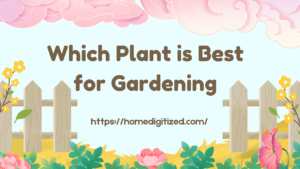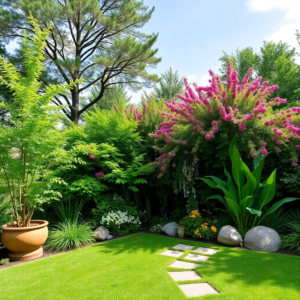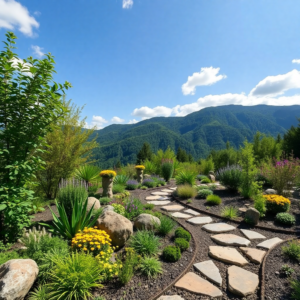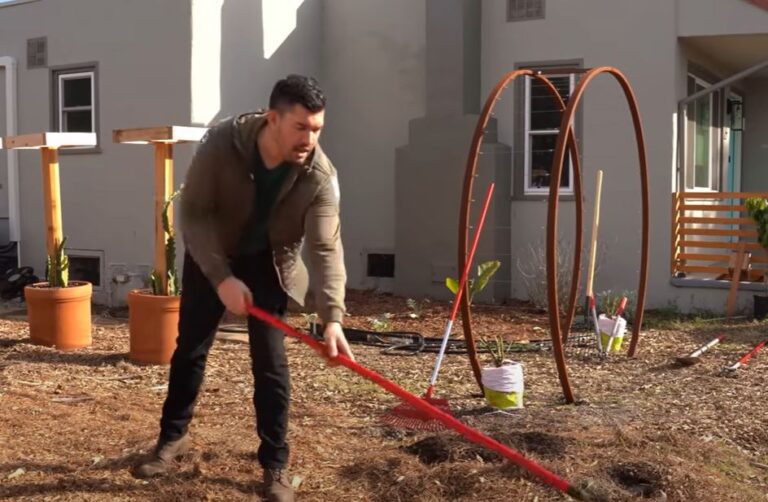Best plants for Commercial landscaping Exploring the Best Gardening Methods
When exploring the best plant for gardening, versatility and climate adaptability stand out as crucial factors. Heirloom tomatoes are often considered the ideal choice for many gardeners due to their rich flavor, variety, and ability to thrive in various growing conditions. These plants not only offer delicious yields but also encourage sustainable gardening practices.
Equally important is the gardening method employed. Raised bed gardening is favored for its ease of access, improved drainage, and soil quality management. Using this method can significantly enhance growth potential while reducing the incidence of pests and diseases. By selecting the right plant and method, gardeners can optimize their efforts for a fruitful harvest.
Understanding Plant Selection
Selecting the right plants for a garden involves considering several key factors. Climate, soil type, and light availability significantly influence plant health and growth. Each aspect plays a critical role in ensuring a thriving garden.

Climate and Hardiness Zones
Understanding climate and hardiness zones is essential for effective plant selection. These zones indicate which plants can survive and thrive based on temperature and seasonal changes.
Hardiness Range: Familiarize with the USDA Hardiness Zones, which categorize regions from 1 (coldest) to 13 (warmest).
Local Climate: Consider factors such as humidity, rainfall, and typical temperature fluctuations.
Microclimates: Recognize that small variations in climate exist within a garden space.
Choosing plants suited for specific zones increases the chances of successful growth.
Soil Types and Preferences
Soil type significantly impacts plant health, growth, and nutrient availability. Different plants have varying soil requirements that must be met for optimal development.
Soil Composition: Identify if the soil is sandy, clay, loamy, or rocky. Each type influences drainage and nutrient retention.
Soil pH: Test the soil pH level (acidic, neutral, or alkaline) to determine which plants will thrive. Organic Matter: Incorporating organic matter improves soil structure and fertility. Plants suited to the existing soil characteristics will establish roots more effectively. Sunlight and Shade Requirements Light availability is a pivotal factor for plant growth. Understanding sunlight and shade preferences will guide appropriate plant selection.
Sunlight Needs: Categorize plants as full sun, partial shade, or full shade based on their light requirements.
Daily Sun Exposure: Assess how many hours of sunlight different areas of the garden receive each day.
Plant Placement: Position plants according to their light preferences to promote healthy growth and flowering.
Selecting plants according to these light conditions enhances overall garden vitality.
Popular Plants for Beginners
Choosing the right plants can make gardening enjoyable and manageable for beginners. Identifying low-maintenance options and understanding the distinction between annuals and perennials will help in selecting the best plants for a starting garden.
Low Maintenance Options
For those new to gardening, some plants require minimal care while providing aesthetic appeal. Succulents are excellent choices, as they thrive in dry conditions and need less frequent watering. Spider plants are also forgiving, tolerating a range of light conditions and only requiring occasional watering.
Herbs such as basil and mint are not only easy to grow but also useful in the kitchen. Marigolds are vibrant and deter pests, making them ideal for beginners.
These plants benefit from basic care, including occasional watering and ensuring they receive adequate sunlight, making them perfect for novice gardeners.

Annuals vs. Perennials
Understanding the difference between annuals and perennials is crucial for planning a garden. Annuals complete their life cycle in one growing season. They bloom lavishly and can be replanted each year, allowing for seasonal variety. Examples include zinnias and petunias, which offer bright colors throughout the season.
In contrast, perennials return year after year, providing a consistent foundation for a garden. They may take longer to bloom but can fill space with greenery during the off-season. Examples include daylilies and hostas.
Choosing a mix of both types can create a vibrant and sustainable garden that changes over time while requiring different levels of care.
Gardening Methods Overview
Various gardening methods cater to different needs, space constraints, and preferences of gardeners. Understanding each method helps in choosing the best approach for specific gardening ambitions. Traditional In-Ground Gardening Traditional in-ground gardening involves planting directly in the soil of a yard or garden. This method offers the largest planting area and is ideal for growing extensive crops. Soil quality is crucial; it should be rich.
How big do perennial plants get
Perennial plants vary significantly in size, which can impact gardening choices and landscape design. It is important to note that these plants can range from a few inches tall to heights exceeding six feet, depending on the species. Gardeners often seek out perennials that fit specific aesthetic or functional needs in their outdoor spaces.
When selecting perennial plants, one key factor is their mature size. Some varieties, such as sedums, remain compact, while others, like delphiniums, grow substantially taller and require thoughtful placement in garden beds. Understanding these size variations allows for better planning and a more harmonious garden layout.
Knowing the potential growth of perennial plants can enhance both their beauty and practicality in any landscape. By choosing plants that complement each other in size and form, individuals can create a thriving and visually appealing garden environment.
Understanding Perennial Plants
Perennial plants are a vital part of many gardens and ecosystems. They offer various benefits such as sustainability, aesthetics, and ecological balance. The following subsections will explore their definitions, characteristics, life cycles, and longevity.
Definition and Characteristics
Perennial plants are those that live for more than two years. Unlike annuals, which complete their life cycle in one growing season, perennials return year after year.
They can be categorized into two primary types: herbaceous and woody. Herbaceous perennials die back to the ground in winter, while woody perennials maintain their structure, such as shrubs and trees.
Perennials often have extensive root systems, allowing them to access water and nutrients from deeper soil layers. This characteristic helps them survive in various climates and conditions. Furthermore, they tend to require less maintenance once established, making them a practical choice for sustainable gardening.
Life Cycle and Longevity
The life cycle of perennial plants is distinctive. They typically go through cycles of growth, flowering, seed production, and dormancy.
Most perennials bloom after their first year, and many increase their flowering output as they mature. Some may live for several years, while others can last decades or even centuries, depending on their species and environmental factors.
Longevity is influenced by factors such as climate, soil health, and care practices. Some perennials thrive in specific conditions, while others adapt to a wider range of environments. Proper care can extend their lives significantly, making knowledgeable gardening crucial for maximizing the benefits of perennial plants.
Typical Size Ranges
Perennial plants exhibit a diverse array of sizes, influenced by species characteristics and environmental conditions. Understanding typical size categories and growth factors can help in selecting the right plants for various landscapes.
General Size Categories
Perennial plants are often categorized into several size ranges:
-
Low-growing varieties: These typically reach heights of 6 inches to 1 foot. Examples include certain ground covers and low herbs.
-
Medium-sized perennials: These usually grow between 1 to 3 feet tall. Many popular garden plants, such as coneflowers and daylilies, fall into this category.
-
Tall perennials: Plants in this range can grow from 3 to 6 feet or more. This group includes substantial species like hollyhocks and invasive grasses.
Each category serves different landscape functions, with low-growing varieties suitable for borders and tall perennials ideal for backdrops.
Factors Influencing Growth
Several factors significantly affect the size of perennial plants:
-
Species characteristics: Each plant species has inherent growth patterns and maximum size. Some are naturally dwarf varieties, while others are robust.
-
Soil quality: Rich, well-draining soil can promote healthy growth, impacting overall size. Nutrient availability and pH play a crucial role.
-
Light exposure: Full sun vs. shade influences height and spread. Plants in optimal light conditions tend to grow more vigorously.
-
Water availability: Regular, adequate watering fosters stronger plants. Drought or excessive moisture can stunt growth or lead to decline.
Recognizing these elements can assist gardeners in making informed choices for successful perennial plant cultivation.
Common Perennial Plant Examples and Their Sizes
Perennial plants vary widely in size, making them suitable for diverse garden settings. Understanding the size range of small, medium, and large perennials, as well as climbing and spreading varieties, helps in planning and planting.
Small Perennials
Small perennials typically reach heights of 12 to 24 inches. These plants are ideal for borders or rock gardens. Examples include:
- Ajuga reptans (Bugleweed) – Grows 6 to 12 inches tall. It has attractive foliage and blue flowers.
- Sedum (Stonecrop) – Many varieties stay under 12 inches. They are drought-tolerant and come in various colors.
- Thyme (Thymus spp.) – Grows around 12 inches tall. It’s often used for culinary purposes and as ground cover.
Small perennials offer color and texture without overwhelming space.
Medium Perennials
Medium perennials usually reach heights between 2 to 3 feet. These plants can serve as focal points or provide volume in garden beds. Notable examples include:
- Echinacea (Coneflower) – Stands 2 to 4 feet tall, attracting pollinators with its vibrant blooms.
- Lavandula angustifolia (English Lavender) – Grows 1.5 to 3 feet tall, known for its fragrance and versatility.
- Rudbeckia (Black-eyed Susan) – Reaches 2 to 3 feet. This hardy plant produces yellow flowers.
Medium perennials add height and diversity to landscapes.
Large Perennials
Large perennials generally exceed 3 feet in height. These plants can create dramatic statements in gardens. Examples include:
- Hollyhock (Alcea rosea) – Can grow up to 7 feet tall, producing tall spikes of flowers.
- Delphinium (Delphinium spp.) – Ranges from 4 to 6 feet tall. They showcase striking blue and purple flowers.
- Giant Silverberry (Elaeagnus angustifolia) – Reaches heights of 5 to 10 feet. It is valued for its silver foliage and resilience.
Large perennials serve as backdrops or focal features in garden designs.
Climbing and Spreading Varieties
Climbing and spreading perennials offer unique ways to maximize space. These plants can cover structures or spread across the ground. Key examples include:
- Clematis (Clematis spp.) – Growth can reach 6 to 12 feet, climbing trellises and fences.
- Wisteria (Wisteria spp.) – Can grow 10 to 30 feet. It’s known for its breathtaking cascades of flowers.
- Creeping Phlox (Phlox subulata) – Spreads out to 18 inches tall. It provides a colorful ground cover.
These varieties enhance vertical space and ground coverage in gardens.
Optimizing Growth for Perennial Plants
Successful growth of perennial plants hinges on several critical factors. Focus on soil quality, watering habits, sunlight exposure, and appropriate fertilization to maximize their health and vibrancy.
Soil Requirements
The right soil is fundamental for perennial plants. They thrive in well-draining soil rich in organic matter. A pH level of 6.0 to 7.0 is generally ideal for most perennials, although some species may prefer slightly more acidic or alkaline conditions.
Adding compost can improve soil structure and fertility. This provides necessary nutrients while enhancing moisture retention. Perennials also benefit from a mix of sandy, loamy, and clay soils, which allows for adequate drainage while still holding nutrients.
Watering Practices
Watering is vital for the establishment of perennial plants. Newly planted perennials require consistent moisture, preferably through deep watering sessions. This encourages root development rather than surface growth.
Once established, many perennials can tolerate drier conditions. Implementing a drip irrigation system can minimize water evaporation and ensure that the roots receive adequate moisture. Mulching around plants helps retain soil moisture and reduce the need for frequent watering.
Sunlight and Shade Needs
Different perennial species have varying light requirements. Some thrive under full sun, requiring at least six hours of direct sunlight daily. Others may prefer partial to full shade, thriving in conditions with filtered light.
Assessing the light conditions in the planting area is essential. Careful observation helps determine if the chosen perennials will thrive. Grouping plants with similar light needs enhances their growth and reduces competition for resources.
Fertilization and Mulching
Fertilization plays a key role in promoting healthy growth. A balanced, slow-release fertilizer applied in spring supports robust foliage and flowering. It is important to follow application guidelines to avoid over-fertilization, which can harm plants.
Mulching not only conserves moisture but also suppresses weeds and regulates soil temperature. Organic materials such as shredded bark or straw are effective options. A layer of mulch around perennial plants can enhance their overall health and productivity by providing nutrients over time.
Pruning and Maintenance
Effective pruning and maintenance are essential for promoting healthy growth and managing the size of perennial plants. Proper techniques not only enhance appearance but also strengthen the plants against pests and diseases.
Seasonal Pruning Guidance
Pruning should generally occur during the dormant season in late winter or early spring before new growth begins. This timing allows for better healing and encourages robust new growth.
Key steps for seasonal pruning include:
- Remove Dead or Diseased Wood: This prevents the spread of diseases and promotes better air circulation.
- Shape the Plant: Trim back excessively long stems to maintain a pleasing form.
- Cut Back Perennials: Some perennials benefit from a hard cut back while others only require light trimming.
Always use clean and sharp tools to minimize damage and reduce the risk of infections.
Dealing with Pests and Diseases
Monitoring for signs of pests and diseases is crucial. Common pests include aphids, slugs, and spider mites. Regular inspections help identify infestations early.
Management strategies include:
- Insecticidal Soaps: Effective against soft-bodied pests, and they are generally safe for plants and beneficial insects.
- Neem Oil: A natural pesticide that provides a barrier against various pests and fungal diseases.
- Cultural Practices: Proper spacing, good air circulation, and watering at the base of plants can reduce disease occurrence.
Maintaining healthy soil also supports the plant’s immune system, making them less susceptible to diseases.
Winterizing Perennial Plants
Preparing perennials for winter is vital in colder climates. This process helps protect root systems and promotes vigor in the following growing season.
Consider the following winterization strategies:
- Mulching: Apply a layer of mulch around the base of plants to insulate roots and retain moisture.
- Cutting Back: For many perennials, cutting back to about 3-4 inches above the ground can prevent fungal diseases.
- Protecting Trees and Shrubs: Wrap tender species with burlap to shield them from harsh winds and freezing temperatures.
By following these practices, perennial plants can thrive year after year.
Incorporating Perennials in Landscape Design
Incorporating perennial plants into landscape design enhances aesthetic appeal and provides a structured approach to garden planning. By selecting plants wisely, considering companion planting, and ensuring year-round interest, one can create a dynamic and thriving garden environment.
Choosing the Right Plants for Your Space
Selecting the right perennial plants requires an understanding of the specific conditions of the landscape. Factors such as sunlight, soil type, and climate are crucial. For instance:
- Full Sun: Choose plants like Lavender, Echinacea, and Daylilies.
- Partial Shade: Consider Astilbe, Hosta, and Ferns.
- Heavy Soil: Opt for plants such as Bee Balm and Rudbeckia.
It’s essential to consider the size and growth habits of the chosen plants. Taller varieties, such as Delphinium, can serve as backdrops, while shorter plants, like Sedum, provide ground cover.
Companion Planting
Companion planting maximizes the benefits of different species growing together. Certain perennials can enhance each other’s growth, deter pests, or attract beneficial insects. For example:
- Alliums with Roses: Alliums repel aphids, benefiting nearby roses.
- Nepeta (Catmint) with Daylilies: Catmint can help prevent pests while providing a beautiful border.
Creating combinations based on plant attributes, such as drought tolerance or blooming times, ensures a thriving ecosystem. Using color theory to choose compatible plants can elevate the overall design.
Creating Year-Round Interest
To maintain visual interest throughout the year, consider plants that provide different features across the seasons. Some suggestions include:
- Spring: Peonies and Bleeding Heart offer vibrant blooms.
- Summer: Coneflowers and Black-eyed Susans contribute color and texture.
- Fall: Grasses like Miscanthus change color and maintain structure.
Additionally, selecting perennials with varied foliage can add depth. For example, Heuchera offers colorful leaves while Sedum exhibits unique shapes. Implementing plants that attract birds and pollinators ensures a lively atmosphere across seasons.

Propagation and Breeding of Perennials
Perennial plants can be propagated in several ways, including seed, division, cuttings, and grafting.
Seed Propagation
- Seeds can be collected from mature plants and sown directly in the garden or started indoors.
- It may require specific conditions for germination, including light, temperature, and moisture.
Division
- Division involves separating a large, mature plant into smaller sections.
- This method is best performed in early spring or fall to minimize stress on the plant.
Cuttings
- Cuttings can be taken from healthy stems or roots.
- They are placed in a suitable medium to encourage root growth, typically using a hormone rooting powder.
Grafting
- Grafting joins parts of two plants to grow as one.
- This technique allows for desirable traits of two different plants to be combined.
Key Considerations
- Soil type and pH are important for successful propagation.
- Proper watering and light conditions will also influence growth rates.
He or she should choose the method based on the specific perennial species and desired outcome. Understanding these techniques enables successful cultivation and expansion of perennial gardens.







